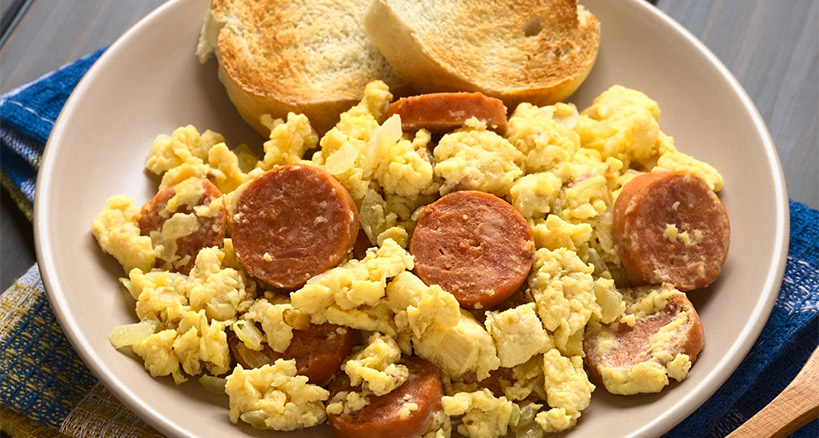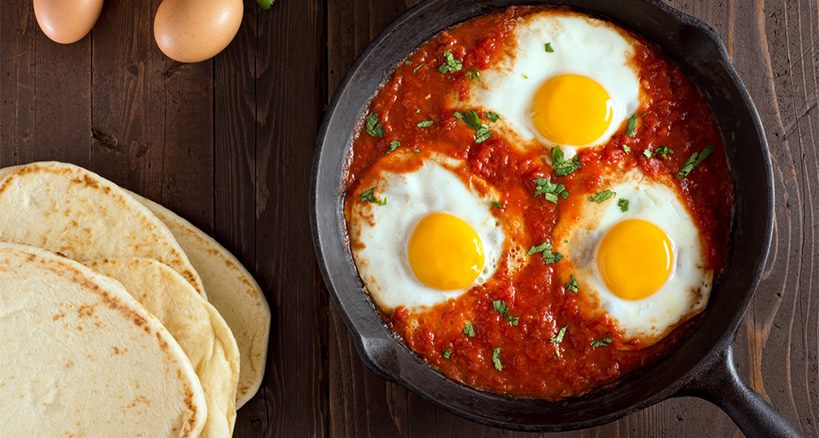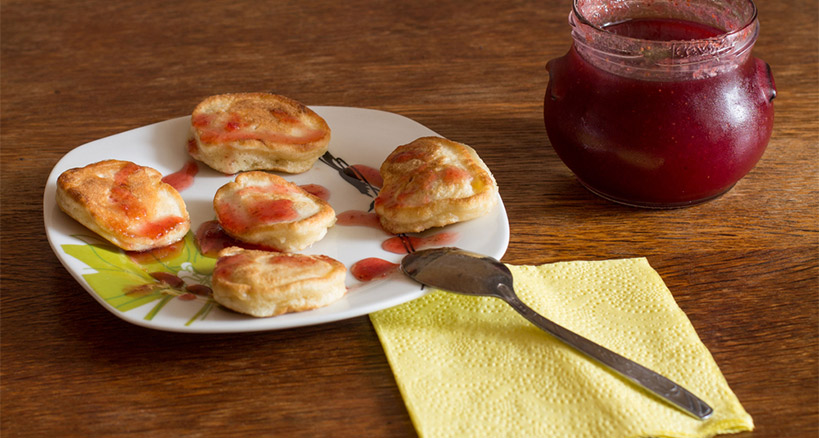
The Breakfast Trend Goes Global
Buffets, in general, and breakfast buffets, in particular, are hugely popular at catered events, and the trend seems to be gaining steam. However, because there is no rest for the weary, and because caterers can never rest on their laurels, smart caterers are always looking for ways to increase the intrigue and allure of their menu offerings. Enter the internationally inspired breakfast – the hottest trend in catered affairs.
A New Twist to an Old Stand-By
While pancakes and waffles never go out of style, and omelet stations are still an integral part of breakfast buffets, the savvy caterer is now going beyond the U.S. borders and incorporating foreign flavors and international dishes in their breakfast menus. According to the National Restaurants Association, 68% of the American Culinary Federation Chefs surveyed chose ethnic-style breakfast food as one of the hottest trends of 2018.
The trick to successfully serving ethnic foods is to combine the familiar with the exotic. So, for instance, if you can’t imagine doing away with pancakes altogether, give them an international flair by using coconut milk in your standard recipe and your guests will notice the difference. Similarly, alongside the tried-and-true favorites like maple syrup, line up a few Asian-flavored syrups, and watch the usual enthusiasm go through the roof.
Suggestions for Ethnic Breakfast Foods
The list of internationally flavored additions to your regular breakfast buffet array is long, but we’re here to make a few suggestions that won’t overly challenge either your guests’ palettes or your repertoire.
Chorizo scrambled eggs: The word chorizo applies to a variety of sausages that originate in Spain, Portugal and Mexico. Chorizos are to Spain what hot dogs are to the United States; the biggest difference is in the kick. Chorizos are spicy and they have a characteristic red color due to large amounts of paprika. In Spanish chorizos, the paprika is usually smoked, which gives the sausage a deep, smoky flavor. Chorizos are cured (which means they are aged for a few weeks); this allows them to be used after cooking for only a short time, making them perfect as a quickly incorporated ingredient in scrambled eggs.

PaleoPlan Magazine has a great recipe for Chorizo scrambled eggs, as follows:
Ingredients
- 1 tablespoon oil
- 1/2 medium onion, diced
- 1 medium bell pepper, diced
- 1/2 pound chorizo, sliced
- 4 large eggs
- 1/4 teaspoon salt
- 1/4 teaspoon black pepper, freshly ground
- 1/4 teaspoon hot pepper sauce
Instructions
- Heat a medium fry pan over medium-high heat. When hot, add oil and saute onions for 5 minutes.
- Add red pepper and chorizo until the chorizo gets crispy around the edges and the onion turns slightly translucent.
- Meanwhile, beat the eggs in a small bowl and add salt and black pepper.
- Pour the eggs into the pan with the onions, peppers and chorizo.
- Scramble the eggs softly until cooked.
- Top with hot sauce.
More International Breakfast Foods

Shakshuka: This spicy version of sunny-side-up eggs, which hails from the Middle East, is a great way to start the day. Shakshuka is basically eggs poached in a tomato sauce laden with chili peppers, onions, and cumin. The sauce is cooked first; once it is bubbling and ready, you break the eggs over the frying pan and they continue to cook in the simmering sauce. For variety, you can add spinach to the sauce or sprinkle feta cheese atop the eggs once they’re done.
Chilaquiles: This Mexican favorite is essentially fried tortilla strips or pieces, cooked with salsa until softened and then topped with guacamole and an egg. They’re kind of like nachos but more substantial and filling. Anything goes when it comes to chilaquiles, and the combination of flavors and textures has made chilaquiles a breakfast and brunch staple throughout Mexico. All you need are some broken up tortillas and you’re in business. You can offer your guests a make-your-own chilaquiles station and let them get creative and have fun.
Congee: Across China, congee is a beloved breakfast food that your more adventurous guests may enjoy. Congee is a rice porridge made by boiling white rice in water until it is saturated with liquid, forming a thick porridge-like consistency. Once you have the basic congee down pat you can start accessorizing: Congee can be accessorized with a range of ingredients, such as vegetables or eggs, and then seasoned with pepper, soy sauce, or scallions, and topped with cashews or peanuts.
Silog: Silog has become the national breakfast of the Philippines. Similar to congee, it is a rice-based dish consisting of garlic fried rice topped with a fried egg.
Oladi: In Russia, Oladi is traditional breakfast food, similar to pancakes but yeastier, fluffier, and not as sweet. They resemble blintzes or crepes, though not as thin, and they can be topped with jam, fruit, sour cream, or syrup.

Epicurious has an easy recipe for Oladi that can be made in a jiffy:
Ingredients
- 1-1/4 cups flour
- 1-1/2 tablespoons sugar
- 1 teaspoon baking soda
- 1/2 teaspoon fine salt
- 2 eggs
- 2 cups kefir or buttermilk
- oil, for frying
Instructions
- Whisk together flour, sugar, baking soda and salt in a large bowl.
- In another bowl, lightly beat eggs and whisk in buttermilk.
- Add dry ingredients to the buttermilk mixture, and stir to combine. Don’t over-whisk: A few lumps are to be expected.
- Heat a large nonstick skillet over medium heat. Add enough oil to slick the surface, and decrease the heat to medium-low or low: These need time to cook through as the surface browns.
- Using a measuring cup or ladle, add 1/4-cup portions of batter to the pan. Cook slowly, as with typical pancakes: until bubbles form on the top surface and the batter begins to lose its gloss, and until the pancakes are golden brown on one side (this may take 3-4 minutes). Flip, and repeat on other side. When gently touched, cooked oladi should feel soft and springy, not wet inside.
A Touch of the Exotic is All It Takes
If you don’t want to go all-out ethnic, you can add a bit of international flair simply by using spices, such as zaatar, to eggs or salads; or by topping your regular humus with a spoonful of tahini (sesame paste). Chimichurri is another great sauce that goes with everything and adds a Portuguese twist to your regular menu offerings. The bottom line is – it’s time to go global and to bring your breakfast buffets to another level. The adventurous diner is looking for more ethnic items and international flavors at the breakfast buffet. Ride the ethnic breakfast wave into your next catered event.